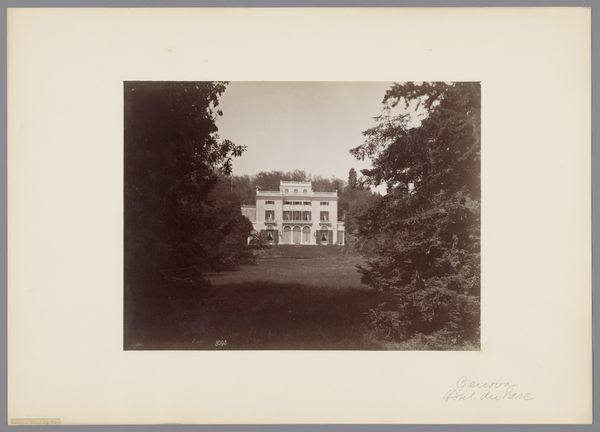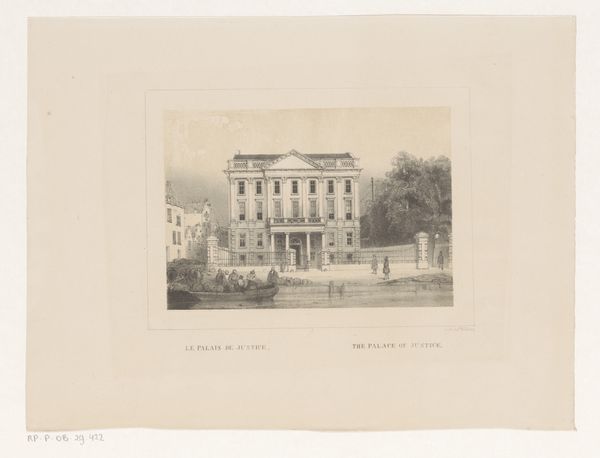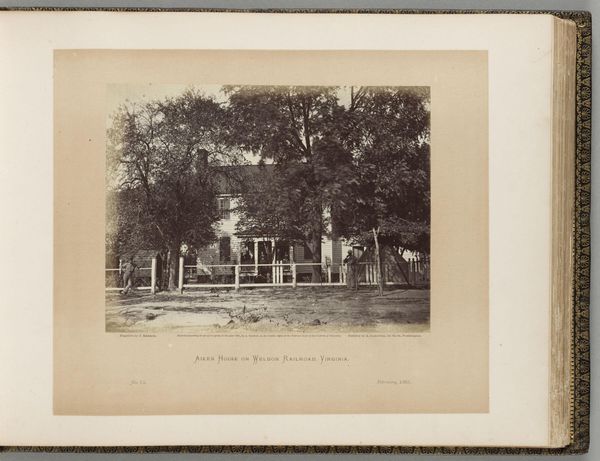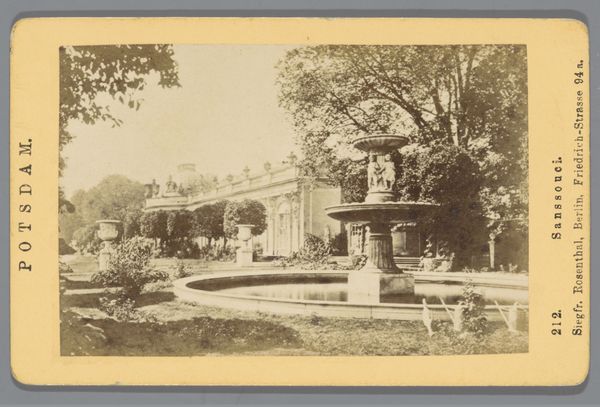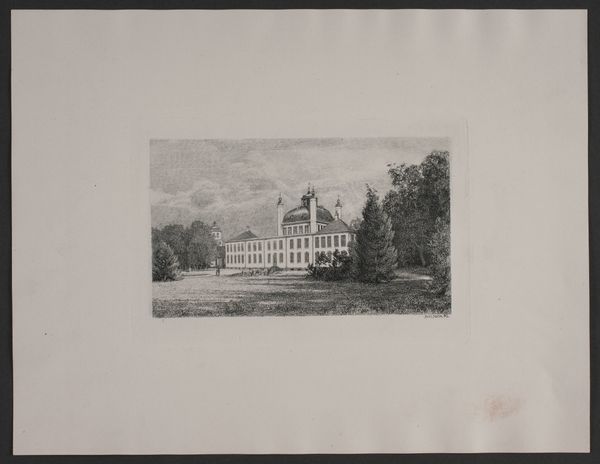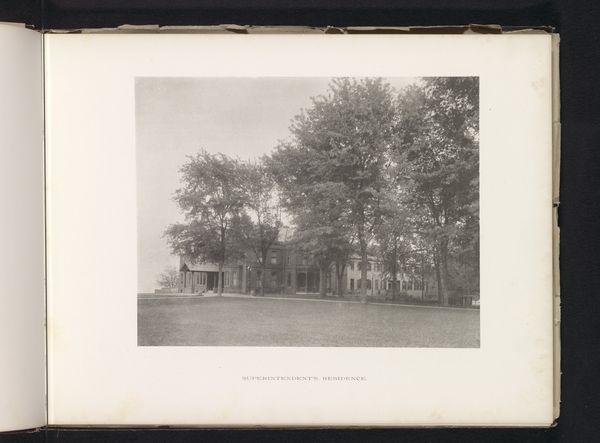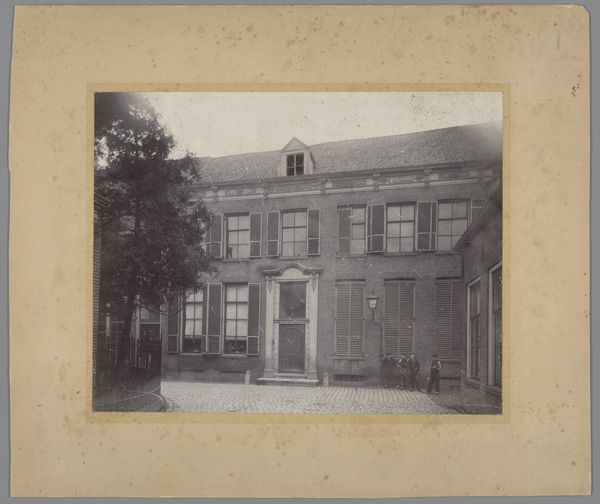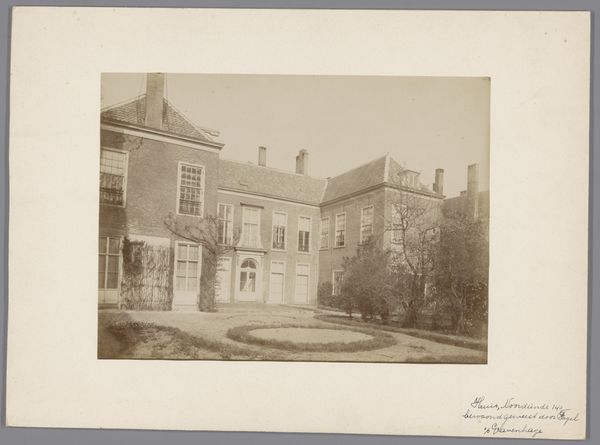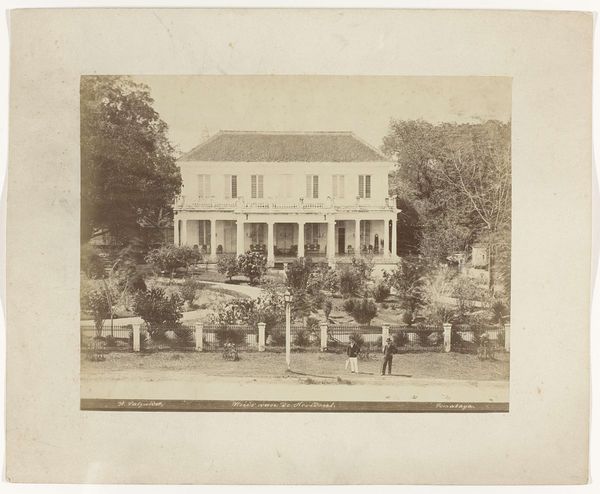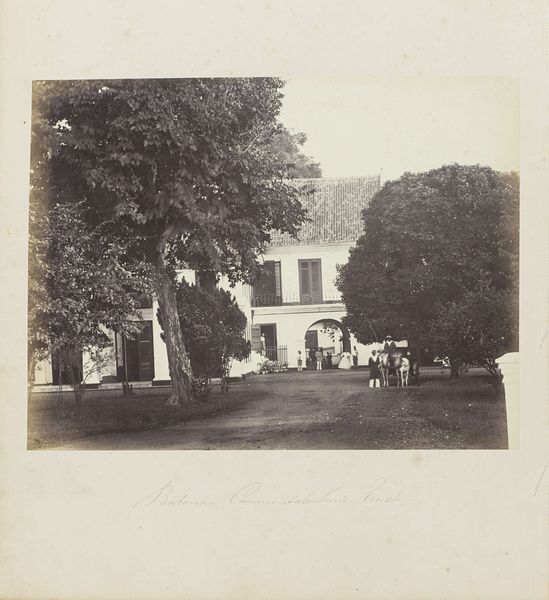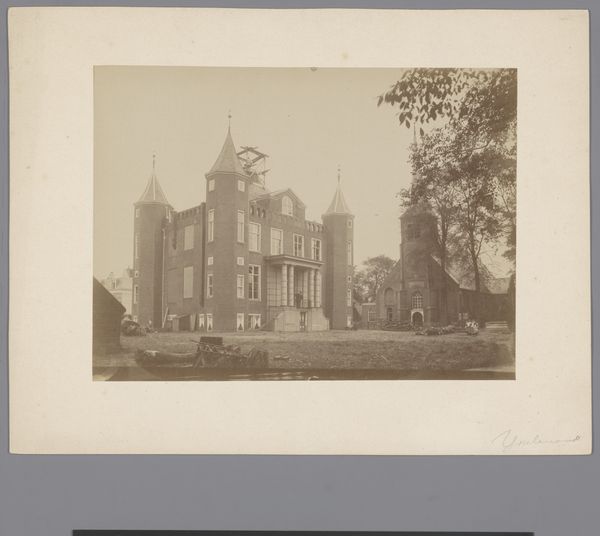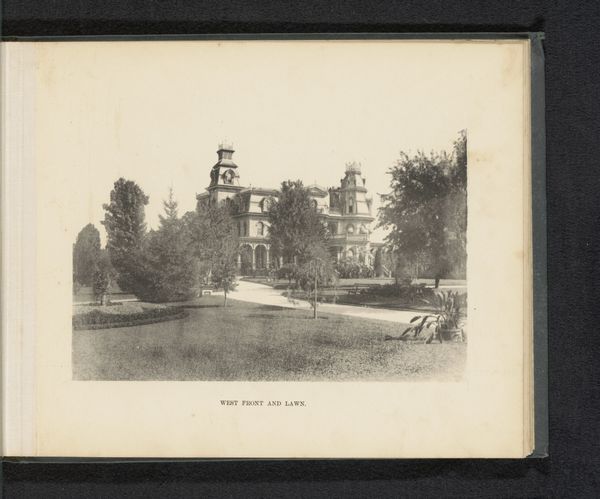
Frankfurt am Main_ Mainzer Landstrasse, house of Consul Koch before 1863
0:00
0:00
albumen-print, paper, photography, albumen-print, architecture
#
albumen-print
#
landscape
#
paper
#
photography
#
albumen-print
#
architecture
#
realism
Copyright: Public Domain
Editor: Here we have "Frankfurt am Main_ Mainzer Landstrasse, house of Consul Koch," an albumen print from before 1863 by Carl Friedrich Mylius. It presents a rather serene, almost classical-looking house. What do you see in this piece, from a symbolic standpoint? Curator: The enduring power of photography lies in its indexical relationship with the past. Before 1863, this house was a reality; Mylius captured not just a building, but a lifestyle, an aspiration. Notice how the symmetrical facade, partially obscured by trees, evokes a sense of established order and bourgeois stability. Editor: Yes, the trees almost act as guardians of that order. But is there a sense of deliberate framing here, directing our view? Curator: Precisely! The house, positioned centrally, suggests a microcosm, reflecting larger societal structures and aspirations. The burgeoning middle class sought to emulate aristocratic ideals, evidenced in the classical architecture. The house becomes a symbol of personal achievement and social mobility, but also conformity. Look at the carefully manicured lawn, another symbol of control over nature and presentation of self. What emotions does this evoke in you? Editor: I suppose a kind of...contained aspiration, like everything is carefully managed. It feels a bit restrictive. Curator: Consider also that photography itself, during this era, became a potent symbol. It was perceived as objective truth, furthering the notion of capturing reality with utmost fidelity. But it also provided new means to display identity, participate in a wider conversation and memorialize our achievements. Are we as different now with Instagram as we think? Editor: I hadn’t thought about that. I’m beginning to see the layers of symbolism at play in what seemed like a simple photograph. It’s fascinating! Curator: Indeed. The photograph functions as more than just an image. It embodies aspirations, values and even the socio-political climate of its time, becoming a vessel for cultural memory.
Comments
No comments
Be the first to comment and join the conversation on the ultimate creative platform.
